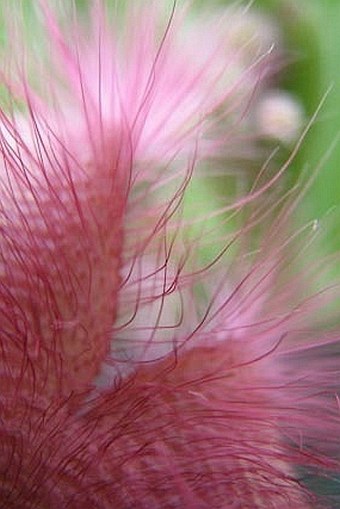Syn.: Gonostemon hirsutus (L.) P. V. Heath
Family: Apocynaceae Juss.

Distribution: From southern border of Namibia along the coast of South Africa, mainly in Western Cape, and northward along the coast to Natal.
Ecology: Dry, sandy soils, among rocks and under bushes, below rock ledges, sheltered from full sun. Grows in regions with winter rains. Blooms after summer dormancy.
Description: Stem succulent with fibrous roots. Stems erect or down-curved-erect, creeping or forming compact clumps, 30 to 100 cm across. Stems slender about 1.5 cm thick and about 12 cm tall. Leaves rudimental, sometimes persistent in dry state. Flowers procumbent, trailing along ground, pedicels usually about 6 cm; sepals 0.5–1.3 mm; corolla yellowish or cream-coloured, 5–14 cm across, margins and tips of the lobes purple, inside of the central region and lobe bases densely hairy; interstaminal corona basally yellowish, apically black-purple, lobes concave, ascending, curved outwards; staminal corona with lobes curving outwards. Pollinia 1 × 0.6 mm, obliquely ovate. Fruit, typical twin horn seed pods, yellowish brown, brown striped, 15–20 cm; seeds with pappi.
Notes: This plant exists in a number of varieties as it is highly variable morphologically. The whole complex needs more research.
This species is of easy culture in several varieties and highly rewarding for its awesome, but foul smelling flowers. Smelly flowers are of course normal to most stapeliads, as they are pollinated by flies, hence Carrion Plant.
The generic name honours the Dutch physician and botanist Johannes van Stapel (1602–36).




These images were taken in culture.


